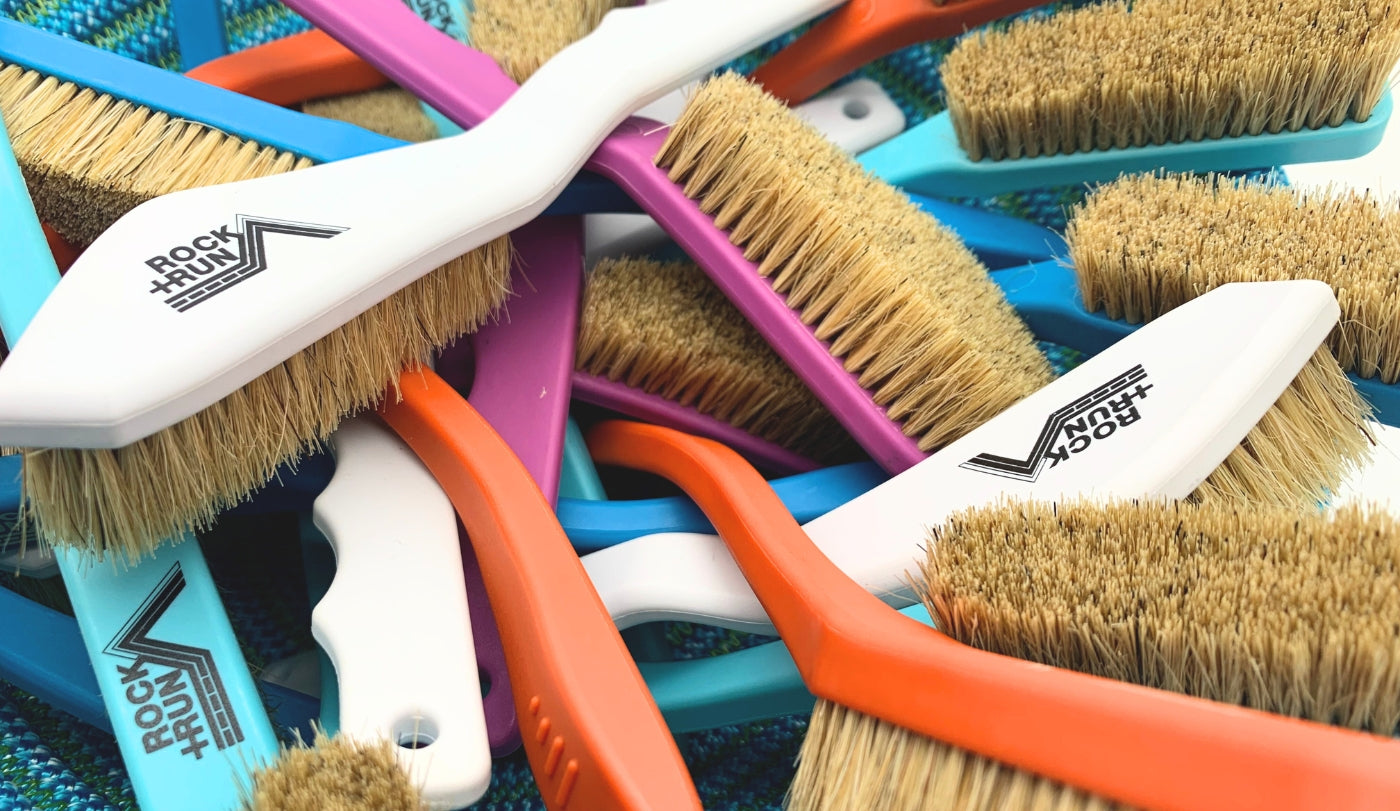By Morgan Cvetkovic-Jones
How do I break in my new climbing shoes?
Numb toes, squashed nails and shrunken feet – ballet doesn’t sound too fun, does it? Similarly, breaking in new performance climbing shoes can, without the correct know-how, prove unpleasant. With these simple tips and techniques, you should hopefully be climbing pain-free and enjoying your new kicks in no time.
Varying models of climbing shoes will likely be made from differing materials, specifically the upper of the shoe (the fabric bit). Shoes made from predominately synthetic materials won’t stretch too much, expanding by up to ½ a size over the course of their life. Leather uppers will be more forgiving on your foot, stretching 1 to 2 sizes and often breaking in quicker. This can make for a more bespoke fit, however it does require the experience to prejudge the ultimate stretch levels for that perfect fit.
The correct size
For the best fit and easiest break in period, the first job is to make sure you’ve bought the correct sized shoe for your needs. For more information about shoe sizing, see our in-depth Rock Shoe Sizing Guide.
Remember: For the highest performance levels, without being unbearably tight, climbing shoes should be a snug fit, ideally eliminating any dead space.
Don't wait until your current rock shoes are unusable
If possible, make sure you have some crossover, so you can easily switch between your old and new pairs without being forced into leaving the new shoes on for too long out of necessity. You want to be easing in that new pair!
1: Plastic Bags
Sounds daft, but initially using a carry bag on your foot allows for tight new shoes to be pulled on and off much easier, by reducing the friction between your foot and the inner of the shoe. During the initial breaking phase, this is not only a great way of getting the shoes on and off easily, it's equally invaluable for preventing possible chaffing of the toes and achilles.
2: Go climbing!
There’s no better way to break in your climbing shoes than to start climbing in them. Climbing in a new pair of shoes bends and twists them in all the right ways to stretch and relax the stiffer materials on the shoe, like the fresh rubber. As you climb, your feet will warm up and expand, heating and stretching the shoe even more.
Tip: If it’s initially painful to climb in your new shoes then take them off after every few climbs - this won’t just give your feet a break but the repeated motion of on and off will force your shoes to mould to the shape of your feet quicker.
3: Wine them, dine them
The most efficient way to break in your shoes when off the wall is to wear them. Whether this is whilst you watch tele, go to the shops or cook a romantic meal – wearing your shoes will naturally stretch them and relax the materials of the shoe. This might be painful to begin with, so do this in stages, gradually increasing the amount of time you keep the shoe on.
4: Warm them up
Still stiff? Well, the best way to speed this expansion process along is to warm your shoes. Heat is the primary catalyst for shoe stretching, forcing the fabrics on the shoe to expand and mould to the shape of your foot. Warming the shoe can be done using multiple methods with the shoe on or off your foot.
On your feet:
- Whilst wearing your shoes at home, gently warm the shoes with a hair dryer. Once warmed, start walking around the house. Repeat this multiple times.
Off your feet:
- Put your shoes on a warm (not hot!) radiator and flip them every couple of minutes. Once your new shoes have been sufficiently warmed, put them on and start walking around the house.
- In the car, whilst travelling to the crag or gym, put your shoes in front of the warm heater.
- Before putting your shoes on, spend a few minutes massaging the shoes in your hands and blow hot air inside the shoe.
- When warming up at the crag pout your shoes inside the sleeves of your jacket - your body heat will soften the materials.
Warning: Be careful when warming your shoes – they should be warm, NOT hot. Shoes are held together by heat activated glue. Cooking your shoes in a roasting oven will cause this strong glue to deactivate and the shoe to delaminate (fall to pieces!).
Finally
Remember, for a performance fit, a shoe that is overly comfortable from new will stretch (often quickly) and lose much of its precision edging, heel hooking and smearing ability - ultimately becoming an expensive carpet slipper.
Be patient with your new shoes. Different construction methods and materials will vary the break-in time, but ultimately your rock shoes will relax and conform to the shape of your feet eventually.













